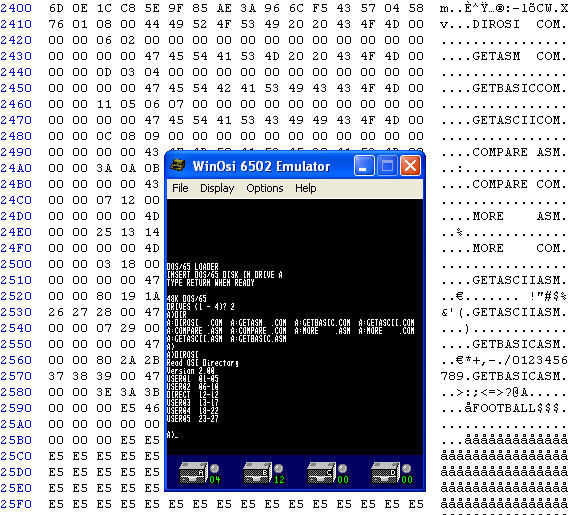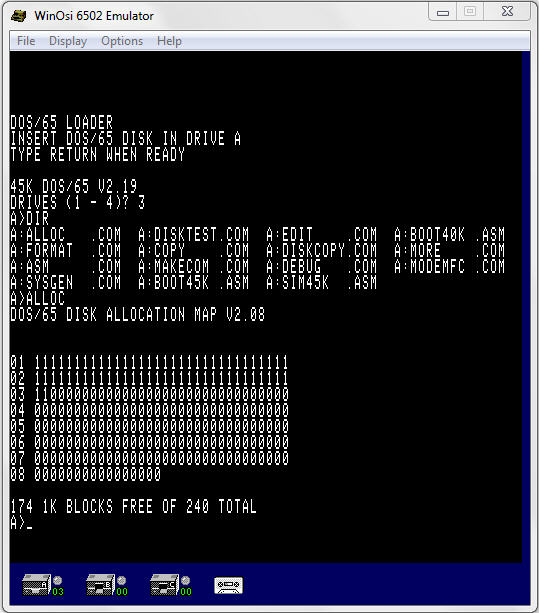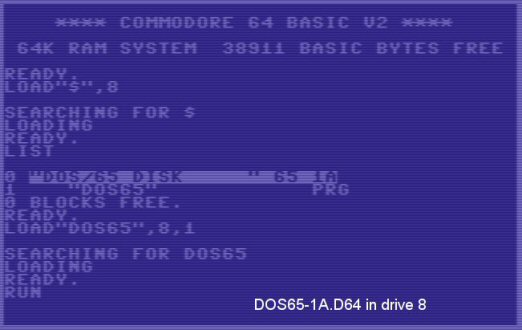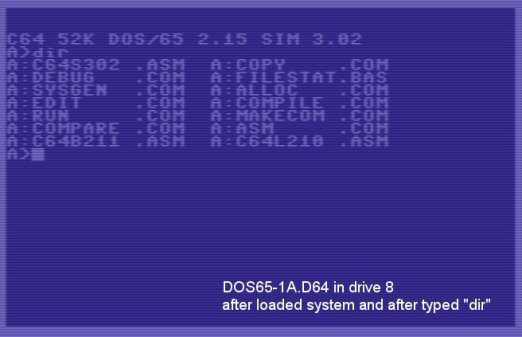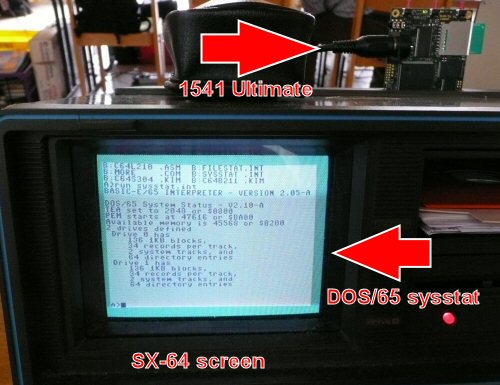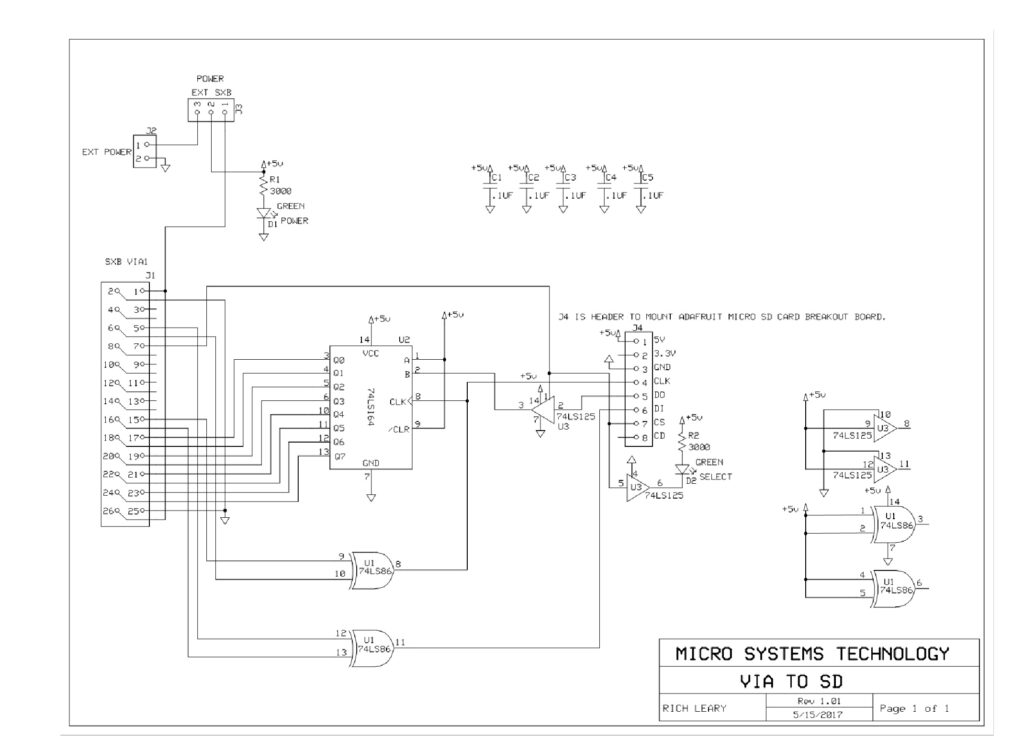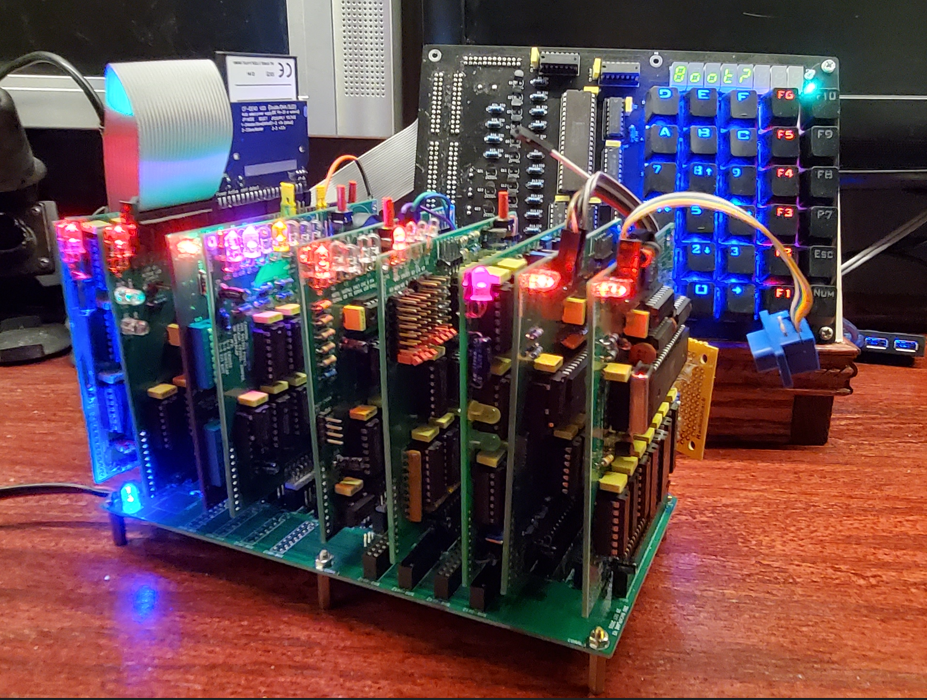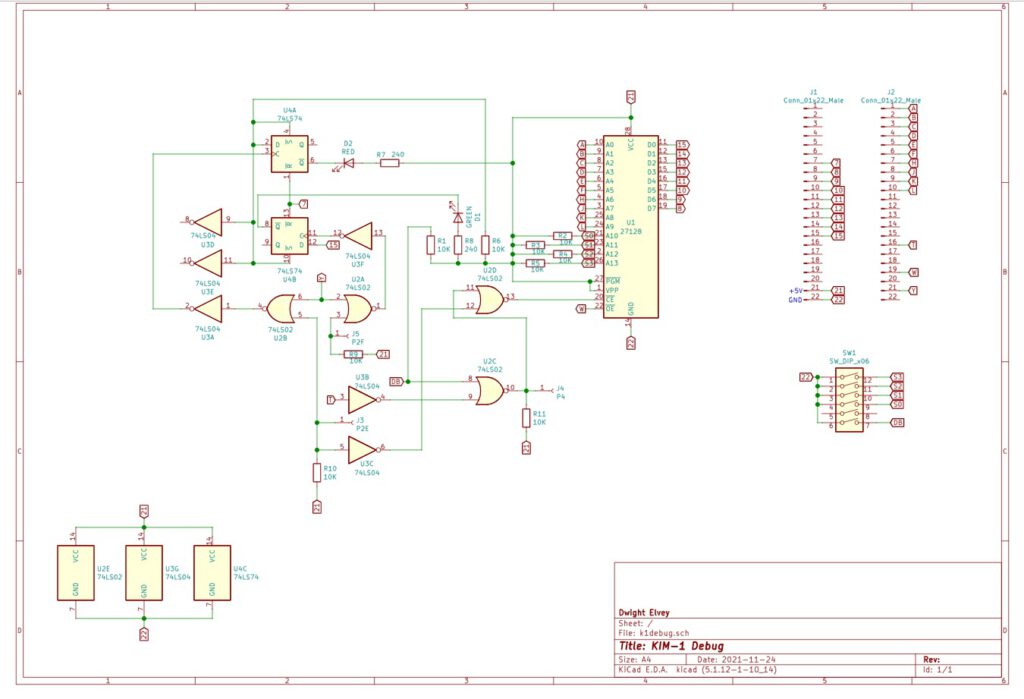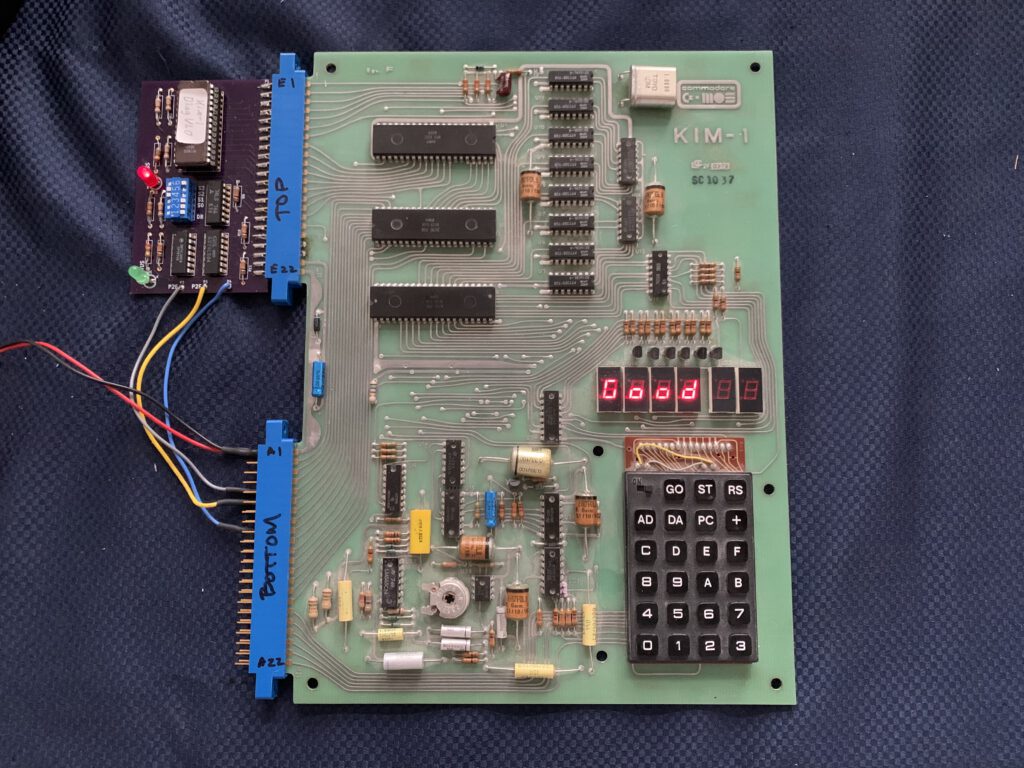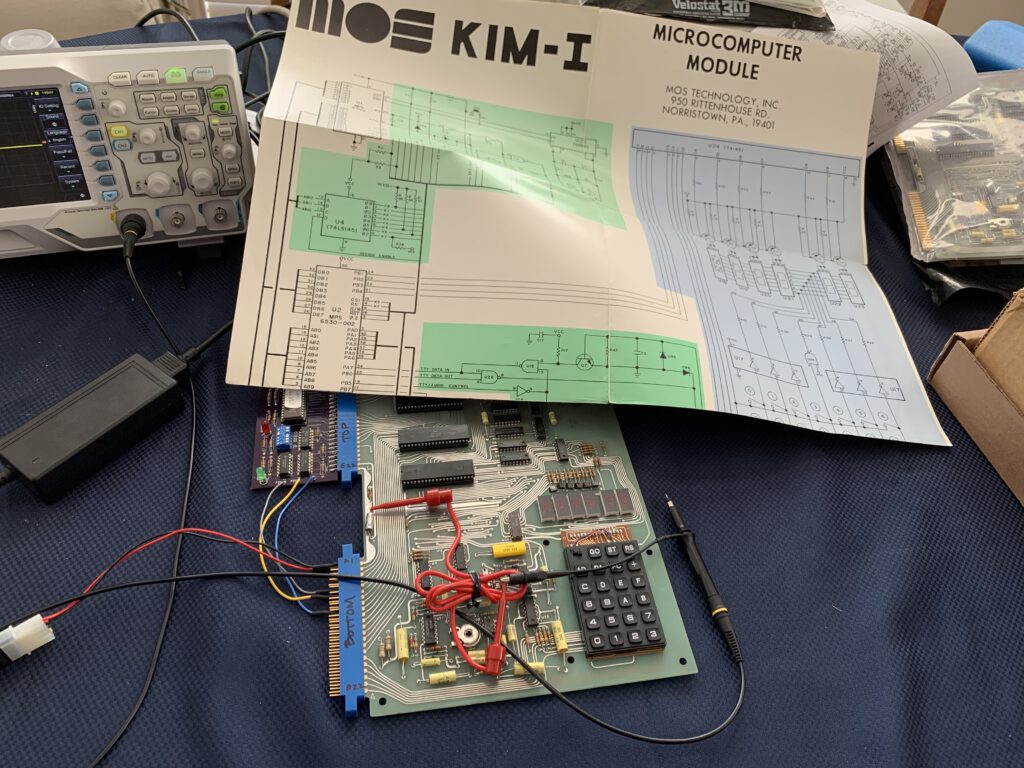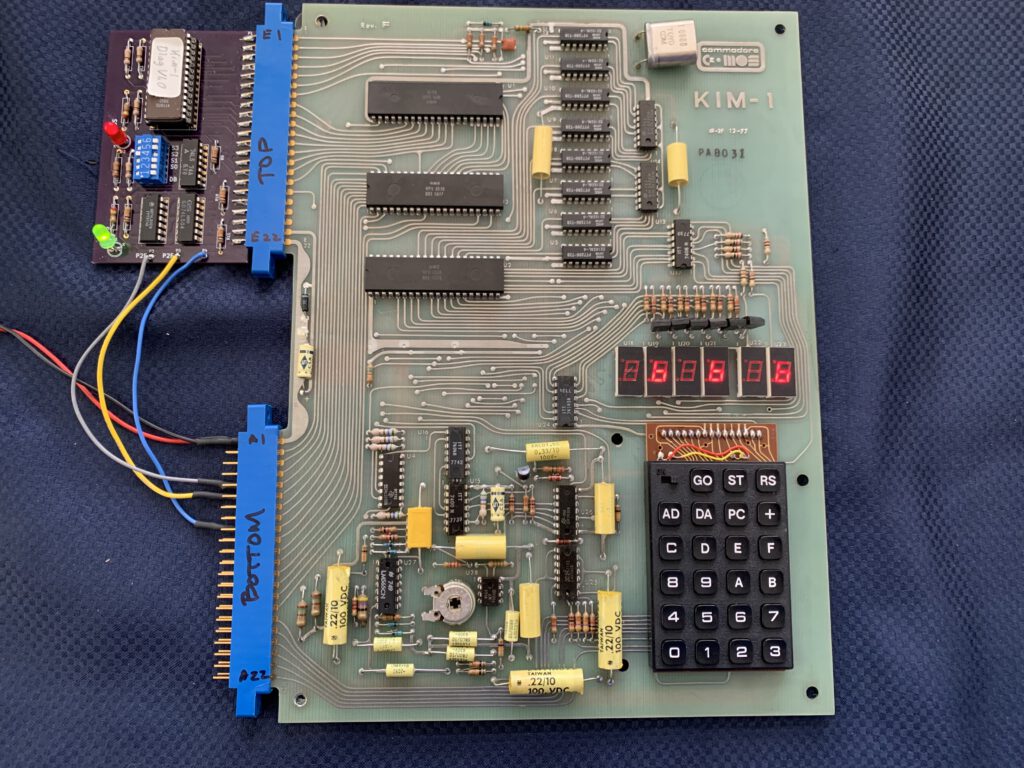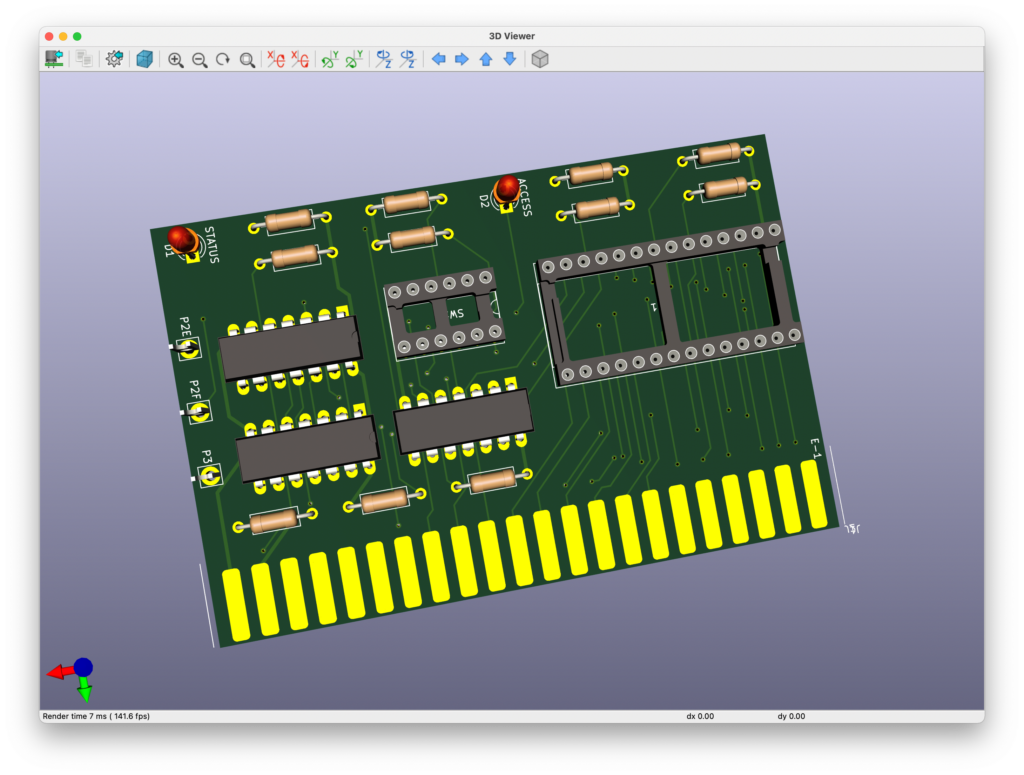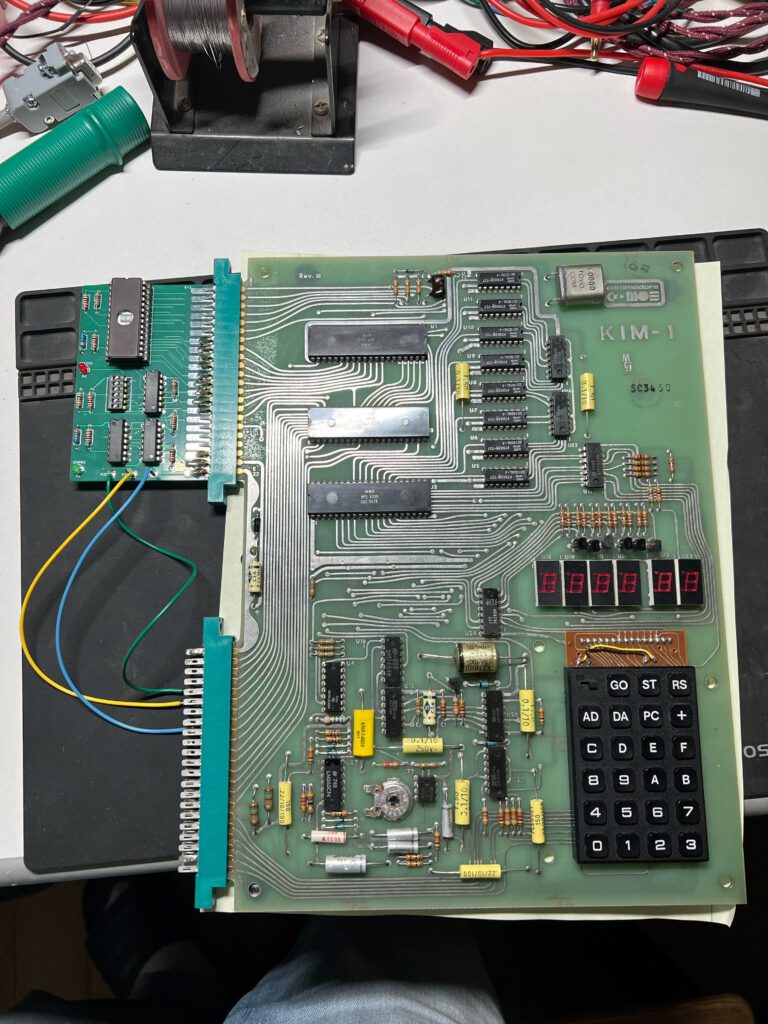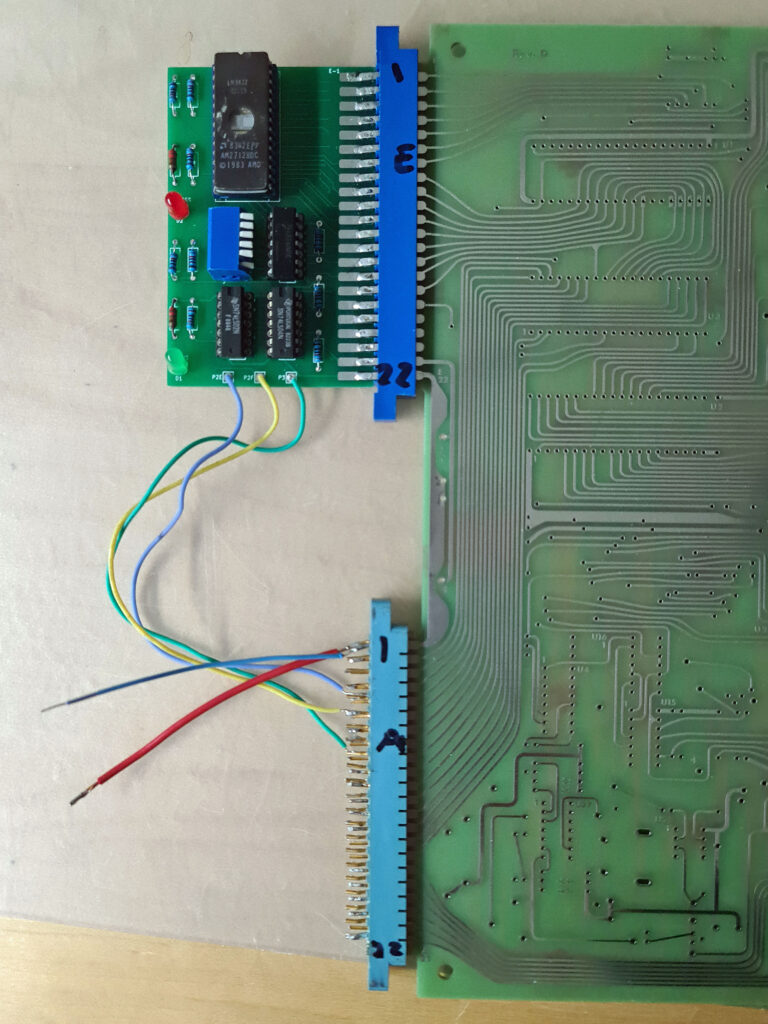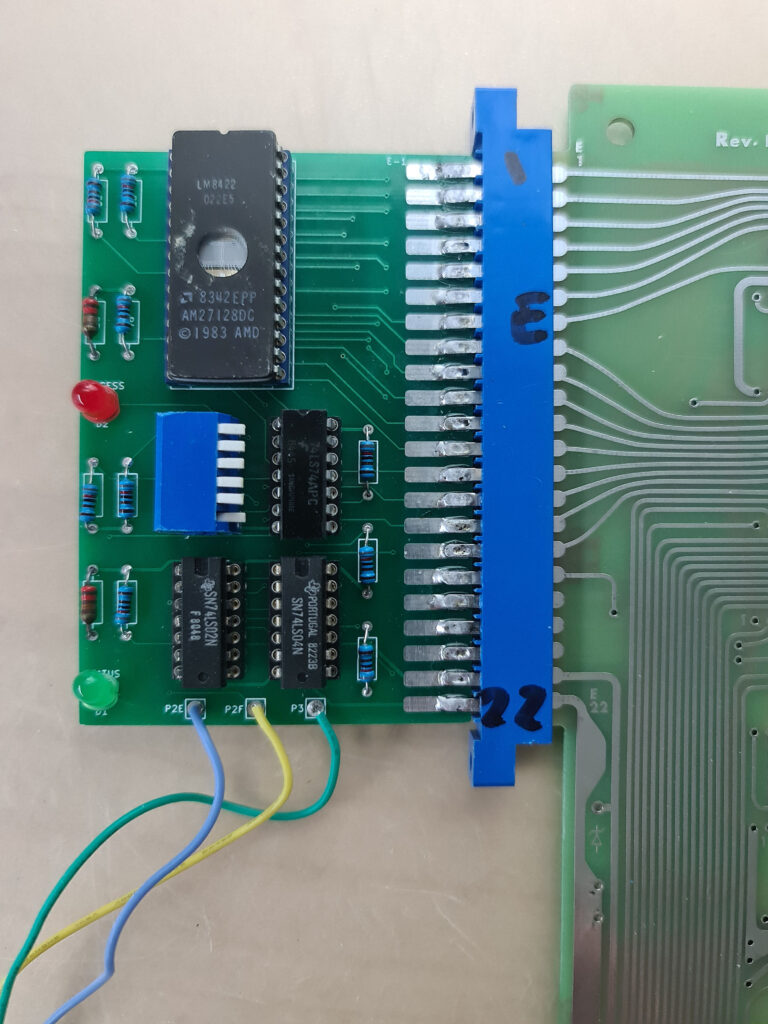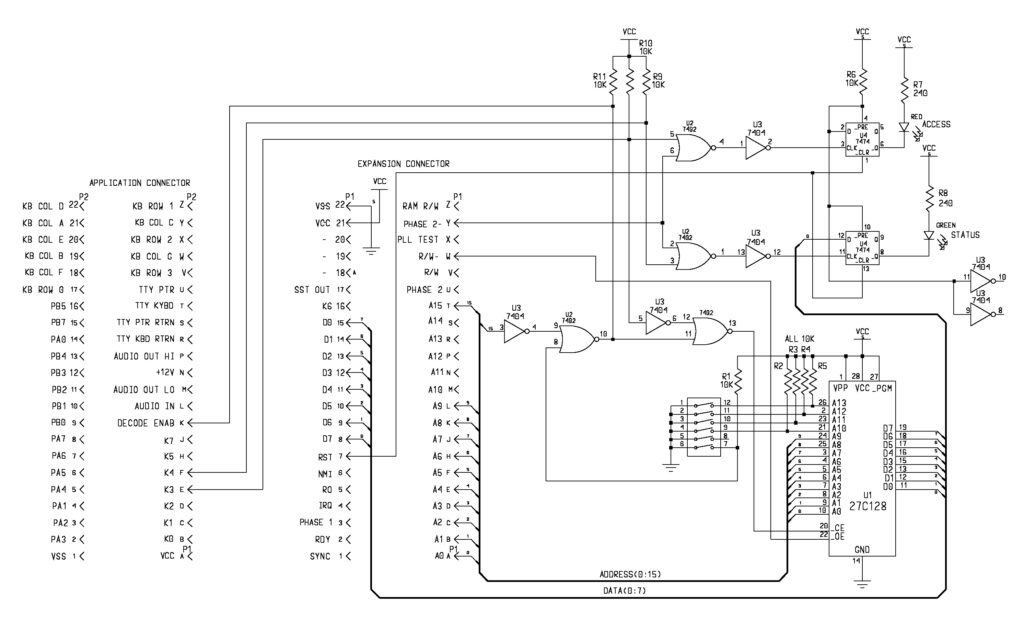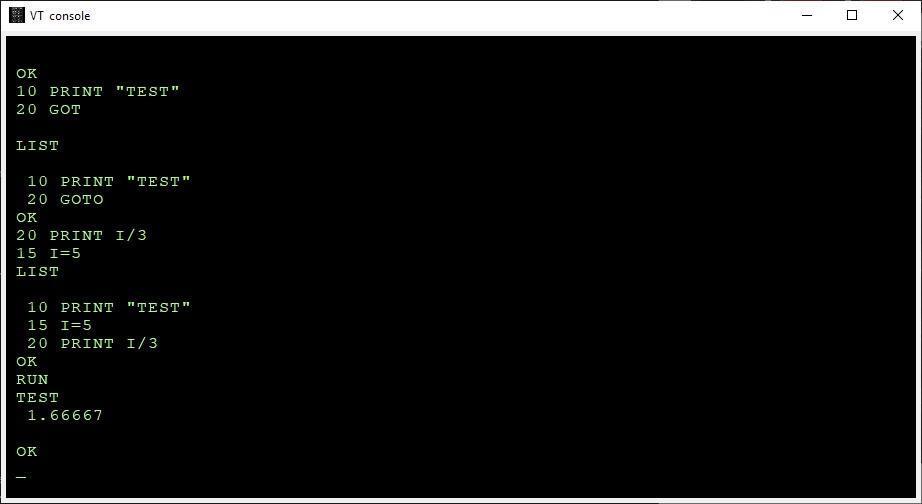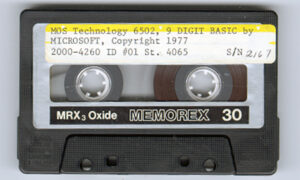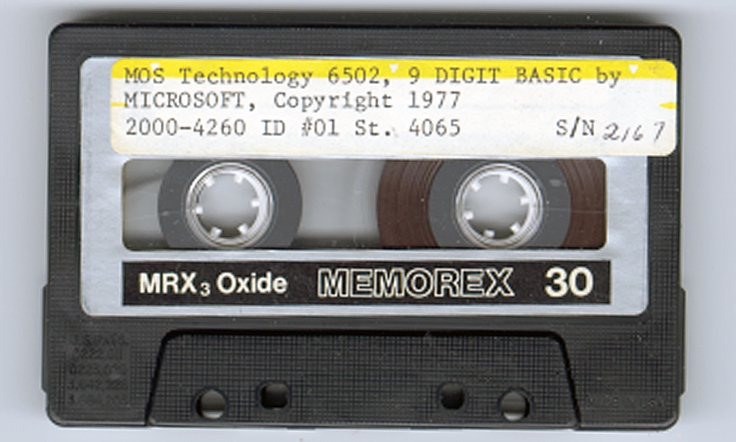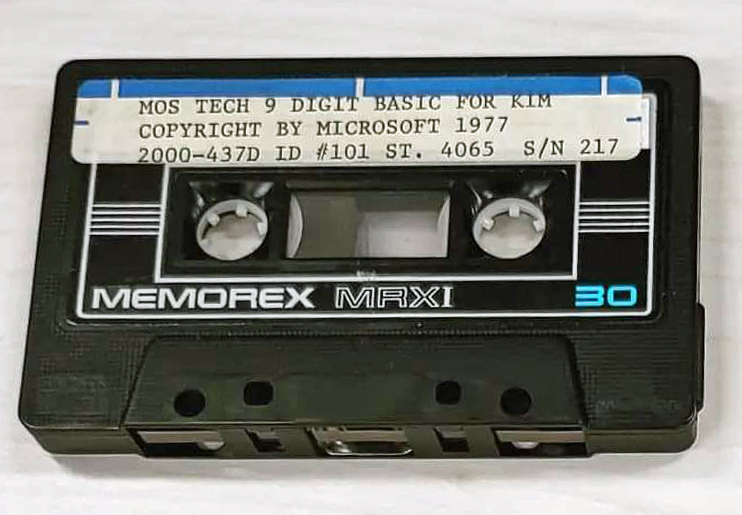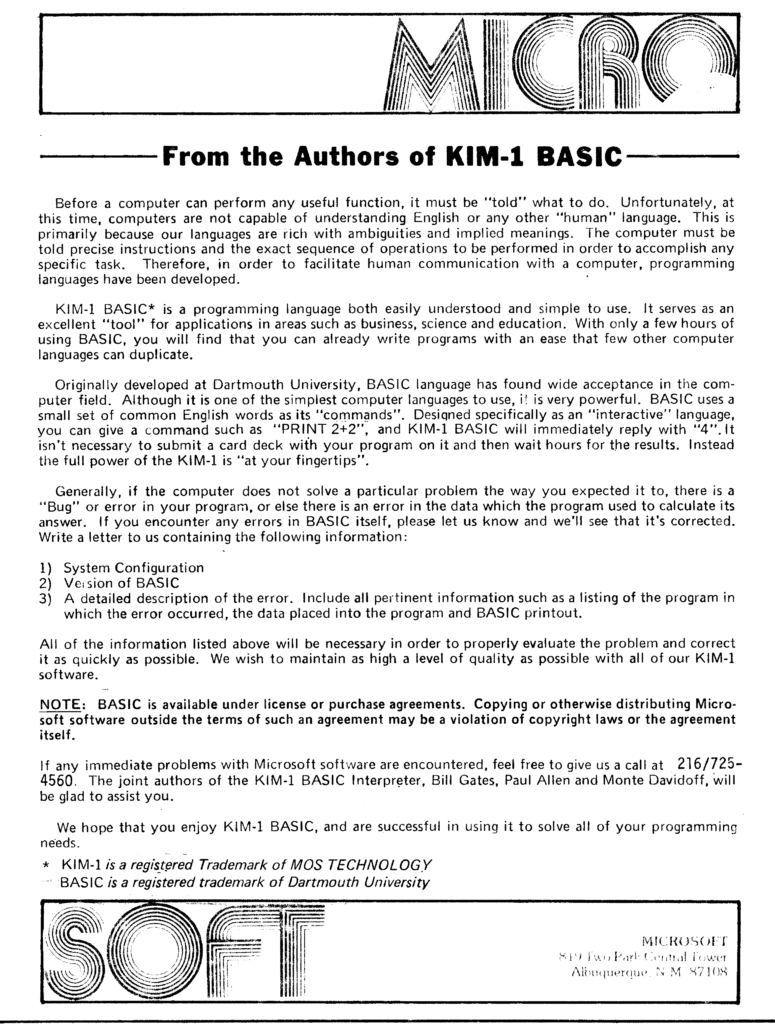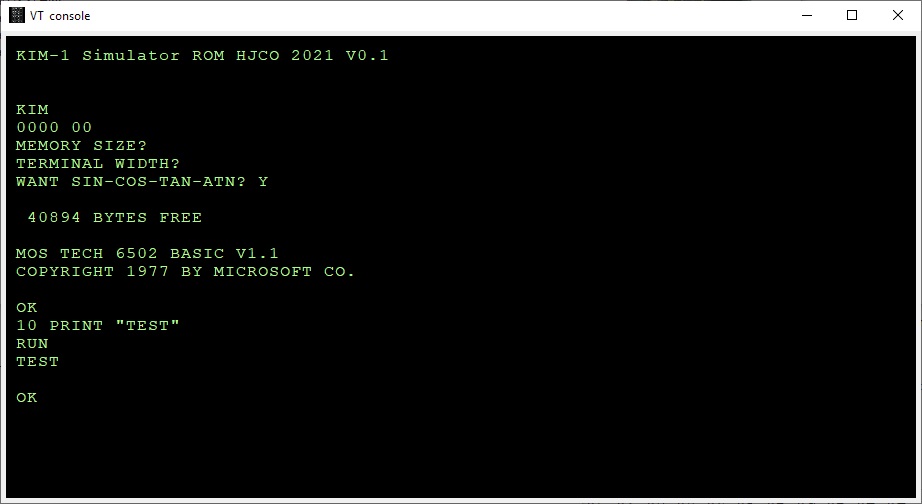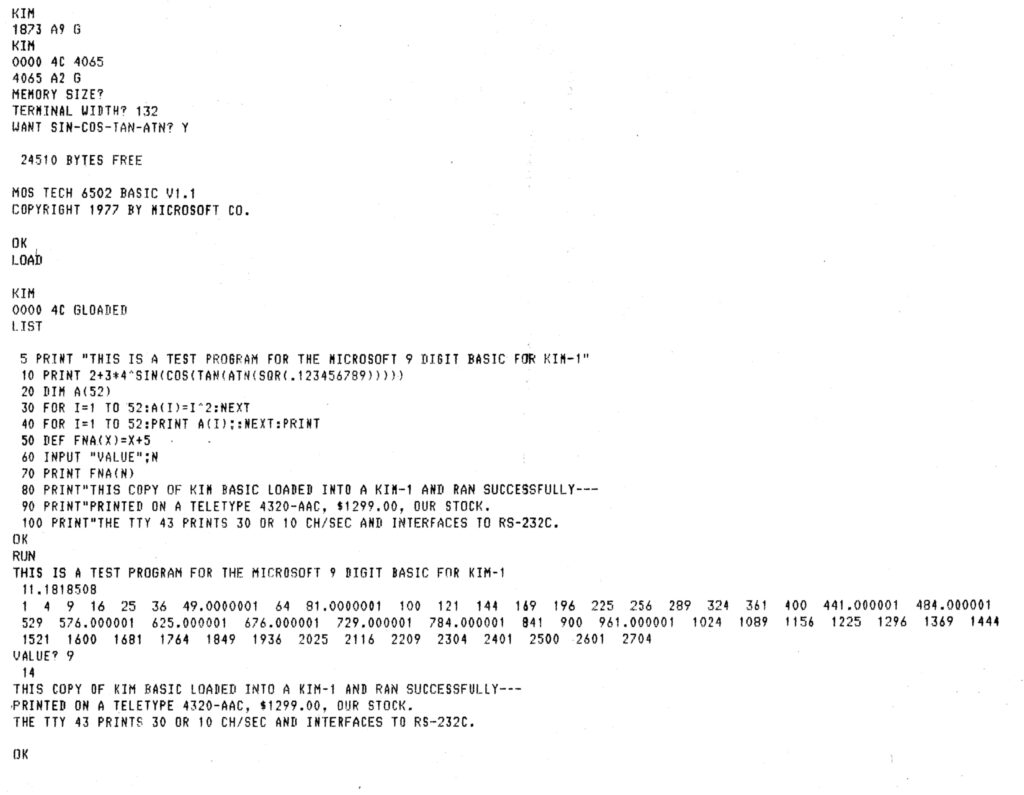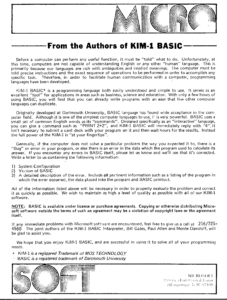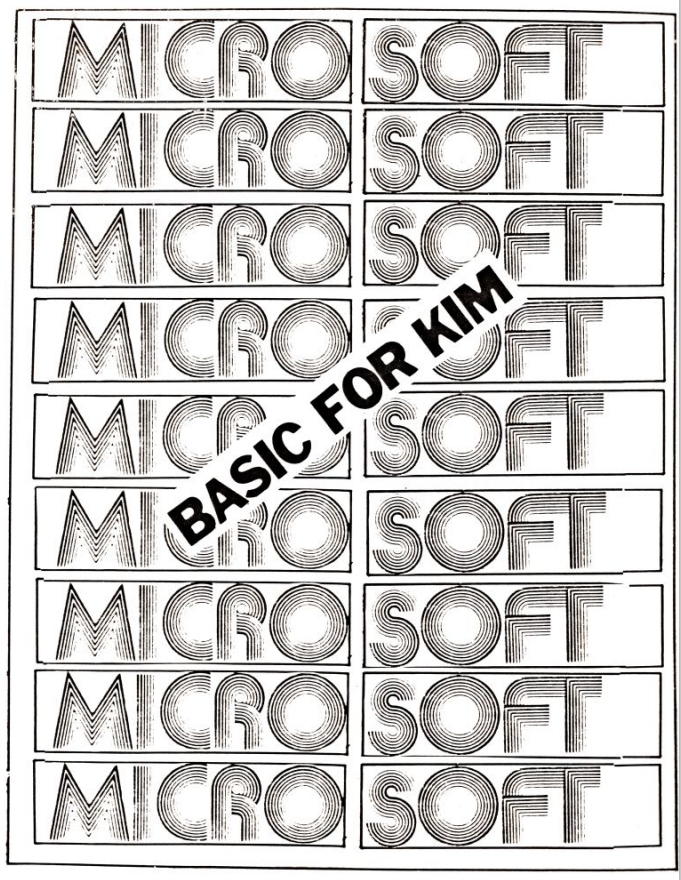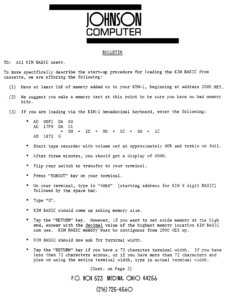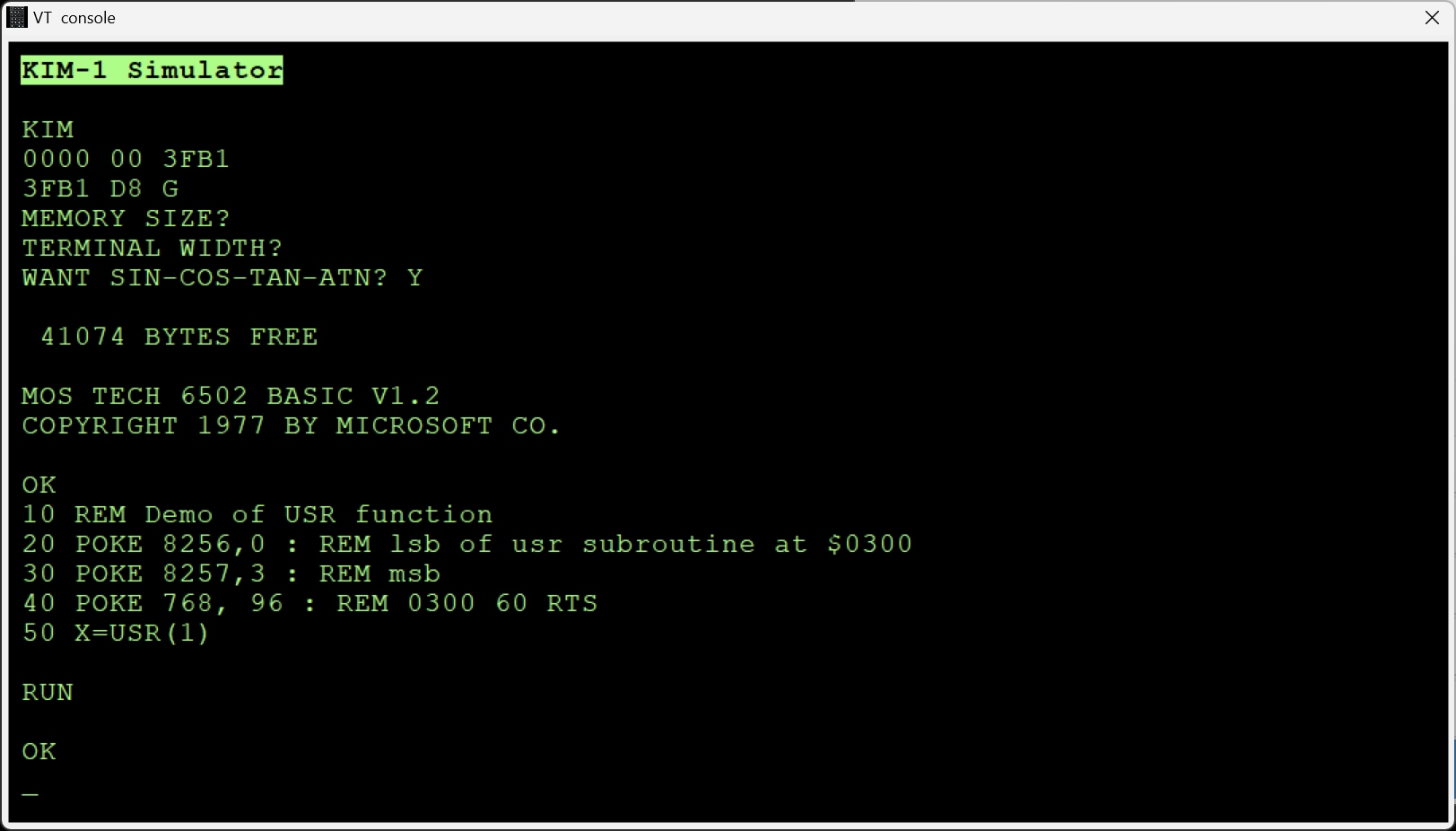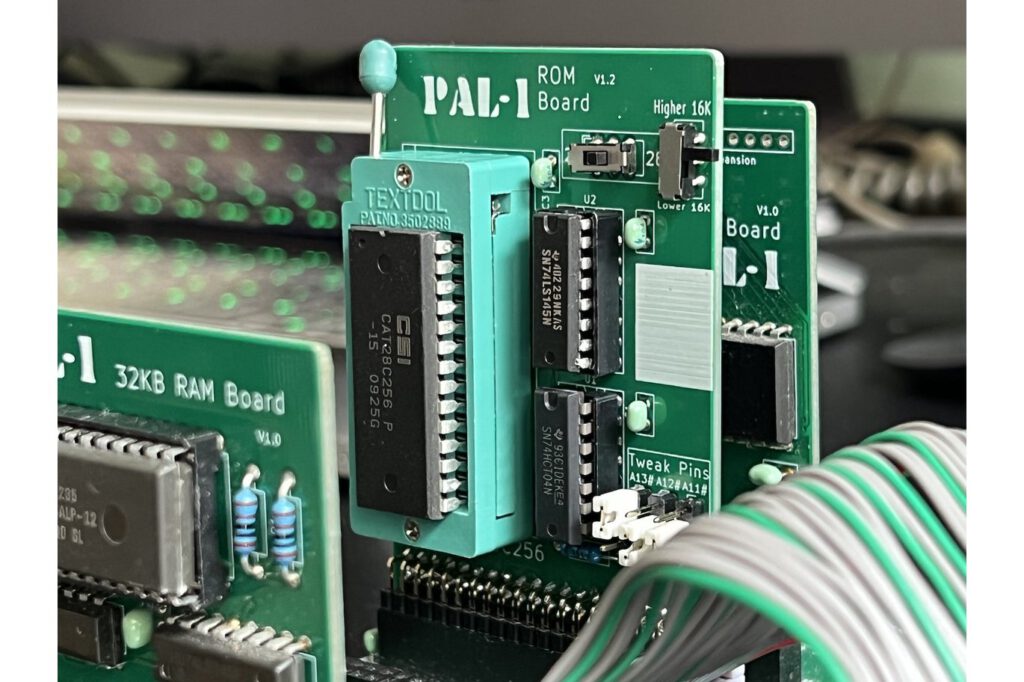Found in Hobbycomputer #1 (c) 1980 Herwig Feichtinger (of EMUF fame!) improved by Nils Andreas, a phonebook
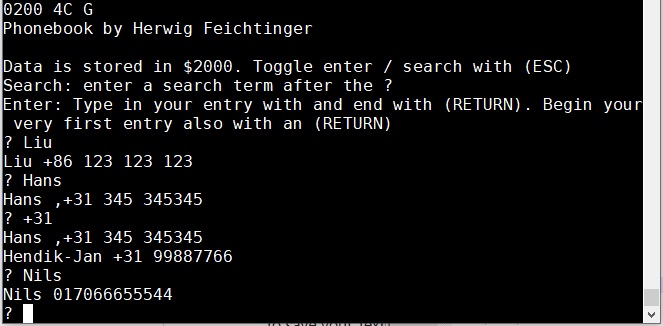
On the github page of Nils you can find source and executables.
In fact, it is a searchable text database.
The program is written, probably by hand, Herwig Feichtinger in the German magazine Hobbycomputer, Issue 1. Available on archive.org.
I took the source as typed in by Nils, added the comments from the (see below) listing in the article and made sure it was binary compatible with the listing. There are some problems with the first entry in the database.
Source, listing, article, binary, papertape of original version of Telefonbuch
; Target assembler: TASM
;*****************************
;* Telefonbuch *
;* (c) 1979 *
;* Herwig Feichtinger *
;*****************************
; typed in and checked by Nils Andreas
; comments entered from German listing into source
; checked for being binary compatible with original listing in HobbyComputer 1 1979
;
; Note that getch in KIM-1 returns with Y = $FF, used in this program to save two bytes?
; Testcase for the KIM-1 Simulator, which now emulates this getch behaviour
;
; Hans Otten, 15 december 2021
;
CR = $0d ; carriage return
esc = $1b ; escape
crlf = $1e2f ; KIM-1 print cr
getch = $1e5a ; KIM-1 read char for tty
space = $1e9e ; KIM-1 print space tty
outch = $1ea0 ; KIM-1 print car on tty
incpt = $1f63 ; increment pointer
;
; zeropage
;
savy = $f9
tablep = $fa ; pointer into table
bufferp = $df ; buffer
table = $0200 ; table starts here
;
.org $0000
;
start: lda #(table & $ff) ; low byte table address
sta tablep
lda #(table >> 8) ; high byte table address
sta tablep + 1 ;
ldx #$17 ; 17 bytes clear
lda #$00
buffer: sta bufferp,x ; clear buffer
dex
bne buffer
;
read: jsr getch ; get ascii character
cmp #esc ; escape?
bne chkend ; no
iny ; yes, y = 0
chkfre: jsr incpt ; increment table pointer
lda (tablep),y ; query buffer
bne chkfre ; free space in buffer?
input: jsr getch ; get ascii character
iny ; y=0
cmp #esc ; escape?
beq start ; yes, back to begin
sta (tablep),y ; no, store in table
jsr incpt ; increment table pointer
jmp input ; and again
chkend: cmp #CR ; return?
beq zzz ; yes, line ready
sta bufferp +1,x ; no, store char in buffer
inx ; increment buffer index
cpx #$15 ; is $15?
bne read ; next character
;
zzz: nop
nop
;
newline: jsr incpt ; table after return
ldy #$00 ; search for character
lda (tablep),y ; in table
beq printquest ;
cmp #CR ; found?
bne newline ; no, search again
found: ldx #$00 ; yes, compare character in table
compbuf: iny ; with character in buffer
lda bufferp +1,x ; no, compare table and buffer
beq printline ; show it
lda (tablep),y
cmp #CR ; return?
beq zzz
cmp bufferp +1,x ; next character
bne found
inx
bne compbuf
;
nop
nop
;
printline:
jsr crlf ; new line
ldy #$01
loadchar:
lda (tablep),y ; load character from table
beq printquest ; zero is ready
cmp #CR ; return?
beq zzz ; end of table entry
sty savy ; save Y
jsr outch ; and print character
ldy savy
iny ; increment Y, next
bne loadchar ; load new character
printquest:
jsr crlf ; print return
lda #'?' ; print ?
jsr outch ;
jsr space ; print space
jmp start ; return
;
.end
Here the pages where the program is described and the listing shown.


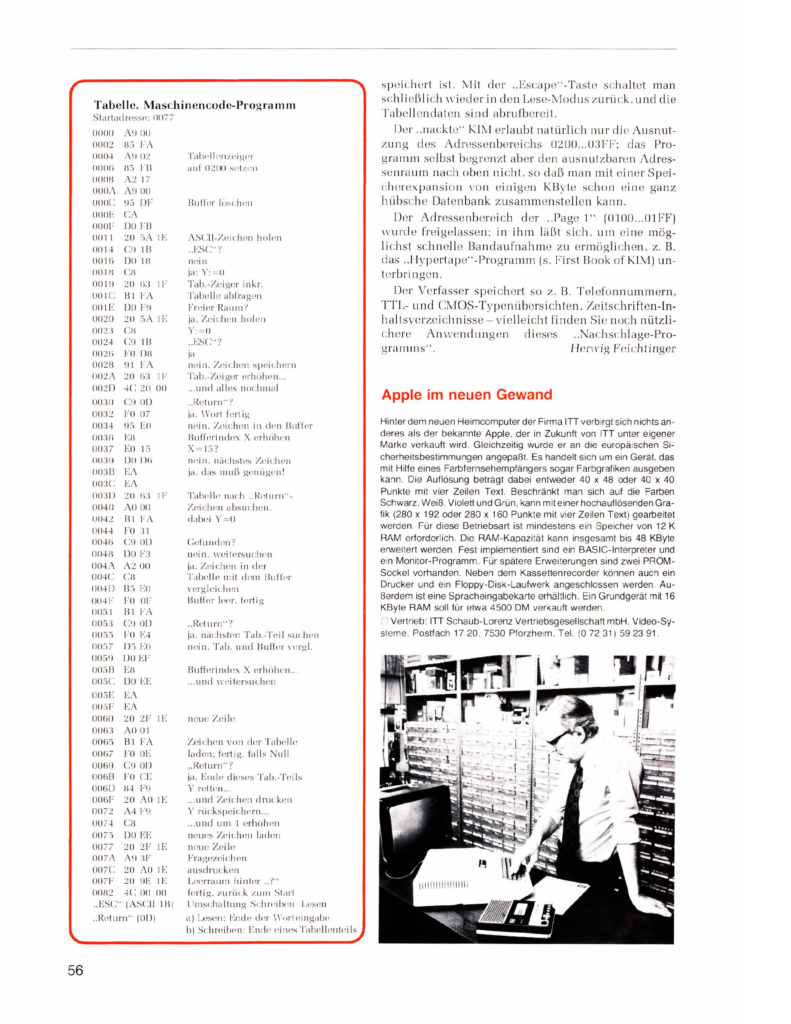

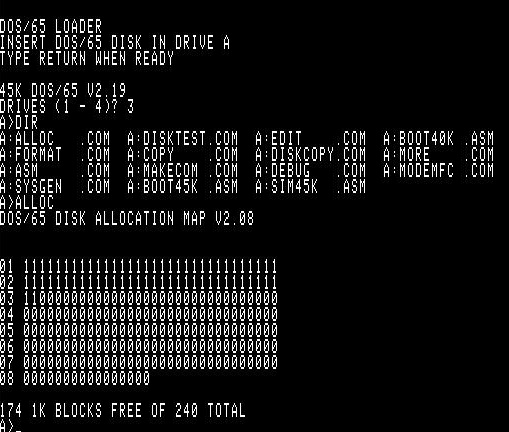 with his permission
with his permission